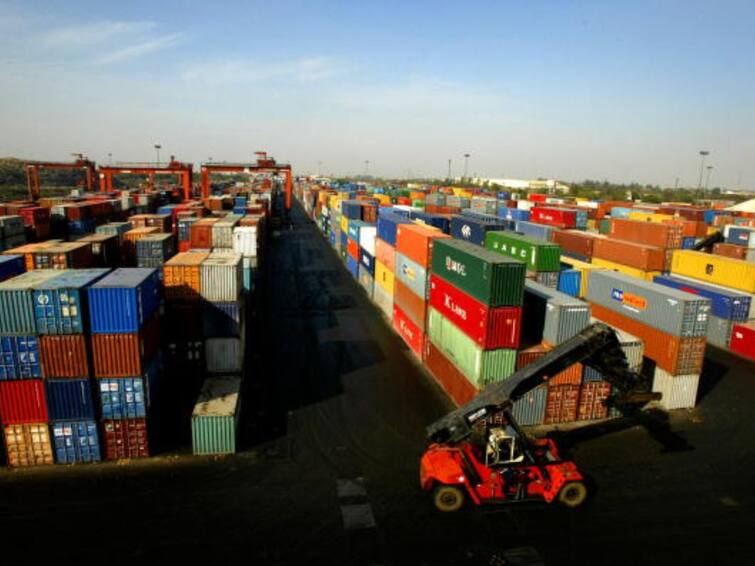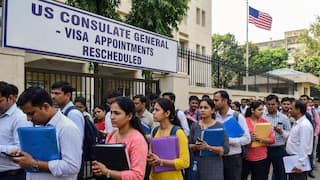How Infrastructural Development In Logistics Will Drive GDP Growth In India
The positive impact of infrastructural development within the Indian supply chain sector on GDP growth is multifaceted

By Vishal Jain
A supply chain constitutes individuals, resources, organisations, activities and technology involved in the production and sale of a product. Trade across industries has evolved as the world has pivoted to digitisation. From sourcing raw materials to the final delivery to the customer, a product's journey can encompass miles and miles spread over cities, countries and even continents. Cognisant of the same, infrastructural development in India has been witnessing increased attention.
Infrastructural development within the supply chain will not only catapult the growth of various sectors but also aid in the GDP growth of the country. The positive impact of infrastructural development within the Indian supply chain sector on GDP growth is multifaceted. Better infrastructure will support a seamless supply chain helping in economic growth, reducing operational costs, reducing inefficient operations, better time management, regional growth, better business opportunities etc paving the way for inclusive economic growth.
The government is working on various reform schemes and initiatives like Gati Shakti, Pradhan Mantri Gram Sadak Yojna, Industrial & Dedicated Freight Corridors, Bharatmala, and Sagarmala projects, Jal Marg Vikas etc to build the necessary infrastructure for an optimised supply chain. These initiatives will help in handling the rising demand for end-to-end logistics solutions, digital integration etc by streamlining better transportation systems, automation etc. Besides Gati Shakti, the NLP will provide direction to the logistics sector with provisions like multimodal logistics parks.
Currently, India stands at 44 on the Logistics Performance Index as per World Bank’s global ranking. This is a huge jump from our 54th position in 2018. Initiatives such as dedicated freight corridors and technology-based solutions will help us climb the ladder further. It is forecasted that the DFCs will reduce logistics costs substantially which currently stand at approximately 15 per cent of the total cost.
These decisions based on data and supported by a complex yet integrated infrastructure network will catapult GDP growth. Here’s how:
Global presence and expansion
An advanced supply chain infrastructure will help the country in bagging offshore operations for global corporations. These hubs will be integral to the production and distribution of goods which in turn will foster GDP growth. Besides this, an enhanced supply chain management system in place will also attract more foreign direct investment. Increased FDI will generate more jobs. Besides this, an efficient supply chain will help Indian industries be more agile, robust and in sync with global value chains. This parity with international standards of production will help the country leverage global opportunities. Lastly, an efficient supply chain infrastructure will position India as a key destination for international trade needs. Improved logistics capabilities will make us a favourable destination for global trade.
Start-up growth and MSME integration
Logistics development and enhanced infrastructure will also result in innovative solutions in the tech space, infrastructure, automation, enhanced digital marketplaces, better connectivity, better inventory management, transparency etc. This growth-conducive environment will be a great launch pad for innovation and entrepreneurship. Start-ups focusing on agriculture, logistics technology, supply chain analytics, smart transportation, end-to-end connectivity, theft prevention, etc. can flourish. This will create jobs ultimately contributing to GDP growth. Besides this, a well-developed supply chain infrastructure will enable small and medium businesses to leverage larger supply chain benefits at reduced costs. This will help them access enhanced logistics and distribution networks to reach a wider audience and scale their business.
Agri-tech growth
India is home to one of the biggest agricultural sectors in the world. The sector however is plagued with supply chain issues, limited connectivity, and limited technology adoption. A robust supply chain infrastructure will help in agri-tech adoption and increase connectivity not only in the domestic market but also exports. Better storage, better transportation, visibility and connectivity in real-time will not only help farmers and agro-based industries not but also lay the foundation for data collection to forecast agriculture trends in the near and far future. This will eventually help in ensuring the optimisation of the agricultural sector and boost revenue.
Urbanisation
An efficient supply chain is reflective of seamless connectivity between different regions and states within India. This is necessary for the flow of goods and services across state borders with fewer bottlenecks. This development will ensure the collective growth and development of various states and regions including remote regions. This will increase opportunities for all.
Job Generation and Skill Development
The evolving logistics and supply chain sector is an ecosystem for increased job generation and skill development. The growth of the supply chain and the associated Infrastructure development will require a skilled workforce. This will include proficiency in deliveries, automation, warehousing, logistics management, tech-savvy approach etc. Every rung of the ladder will need an efficient workforce. This will lead to increased skill development programs and enhanced employment opportunities which support economic growth.
Infrastructural development in the supply chain sector both tangible and technological, will directly and positively impact GDP growth in terms of job generation, opportunities and innovation.
The writer is the co-founder at logistics automation platform, Roadcast.
[Disclaimer: The opinions, beliefs, and views expressed by the various authors and forum participants on this website are personal and do not reflect the opinions, beliefs, and views of ABP News Network Pvt Ltd.]






































